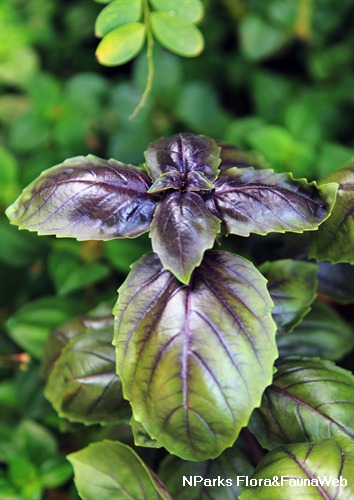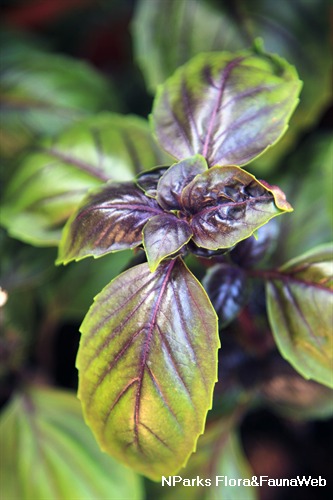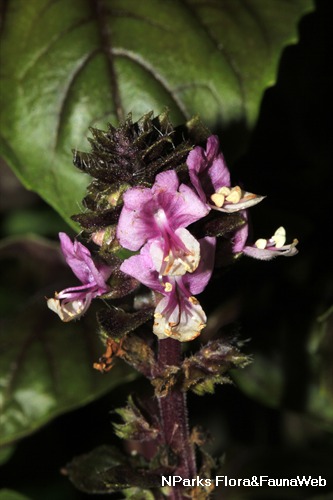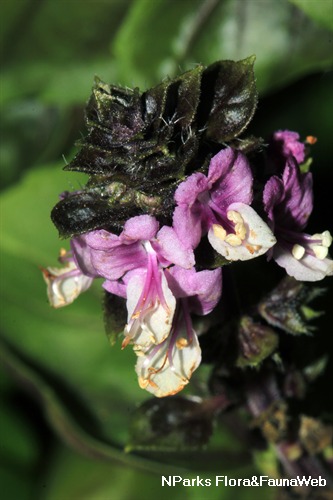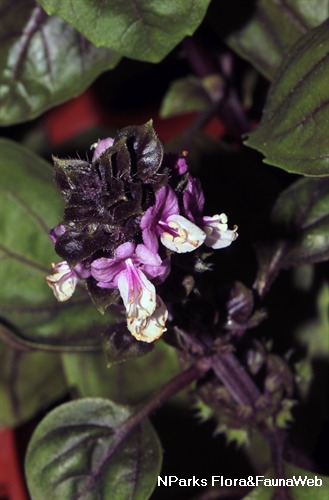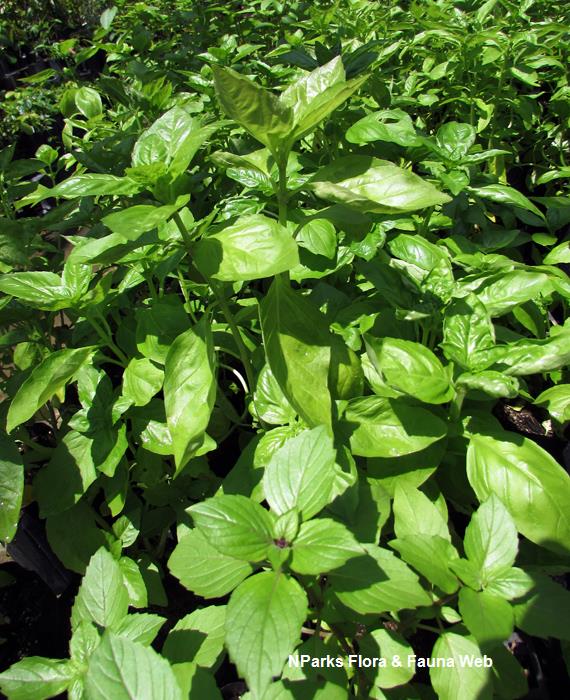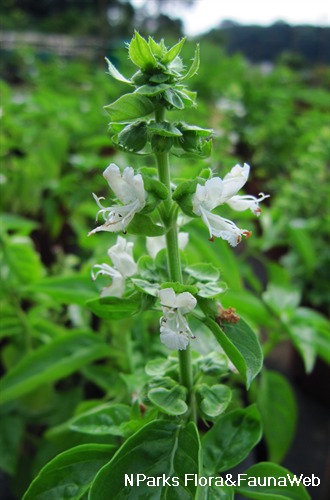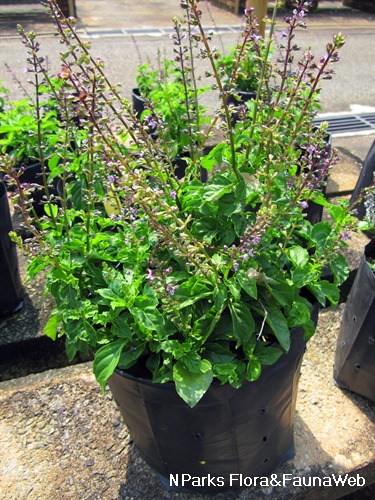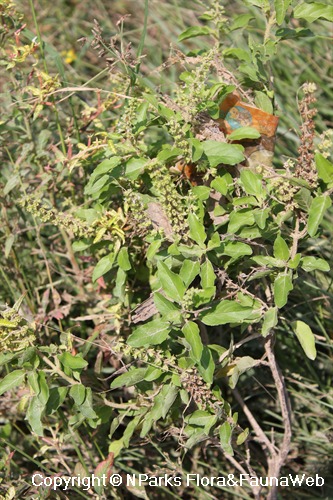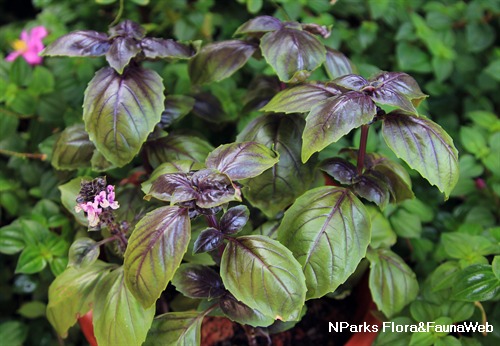
Name
Classifications and Characteristics
| Plant Division | Angiosperms (Flowering Seed Plants) (Dicotyledon) |
|---|---|
| Plant Growth Form | Herbaceous Plant |
| Maximum Height | 0.4 m to 0.5 m |
Description and Ethnobotany
| Growth Form | Annual herb up to 0.5 m tall. |
|---|---|
| Foliage | Young leaves are mostly a glossy, dark purple, while older leaves are purplish near the base and yellowish green around the leaf margin with dark purple veins. The edges of the leaves are toothed and bend downwards, forming umbrella-shaped leaves that look like Sweet Basil. |
| Stems | Stems are dark purple and tend to lean compared to other basil cultivars which are usually erect. |
| Flowers | Flowers have a light purple upper lobe, a white lower lobe and dark purple centre. The stamens are purplish with small, yellow anthers. |
| Fruit | Dry, indehiscent fruits are known as nutlets and look like small seeds. |
| Ethnobotanical Uses | Edible Plant Parts : Edible Leaves Food (Herb or Spice): The leaves have a sweet flavour similar to Genovese Basil. They are best used fresh in salads or sandwiches. Although they can be cooked to make sauces, the dark colour of the sauce may be unappetizing to some. |
Landscaping Features
| Landscaping | The dark purple, glossy leaves are attractive and add a striking contrast in colour. |
|---|---|
| Desirable Plant Features | Ornamental Foliage |
| Landscape Uses | Container Planting |
Plant Care and Propagation
| Light Preference | Full Sun, Semi-Shade |
|---|---|
| Water Preference | Moderate Water |
| Rootzone Tolerance | Well-Drained Soils, Fertile Loamy Soils |
| Propagation Method | Seed, Stem Cutting |
Foliar
| Mature Foliage Colour(s) | Purple |
|---|
Fruit, Seed and Spore
| Fruit Classification | Simple Fruit |
|---|---|
| Fruit Type | Indehiscent Dry Fruit , Nut / Nutlet |
| Seed Quantity Per Fruit | Few (1-5) |
Image Repository
Others
| Master ID | 32224 |
|---|---|
| Species ID | 6632 |
| Flora Disclaimer | The information in this website has been compiled from reliable sources, such as reference works on medicinal plants. It is not a substitute for medical advice or treatment and NParks does not purport to provide any medical advice. Readers should always consult his/her physician before using or consuming a plant for medicinal purposes. |

